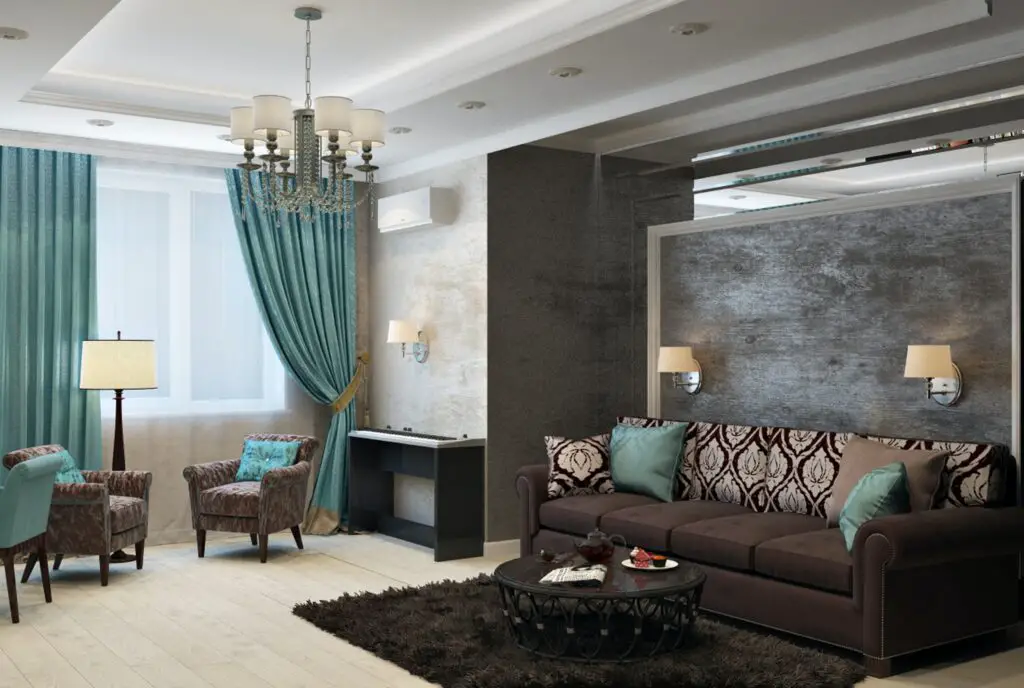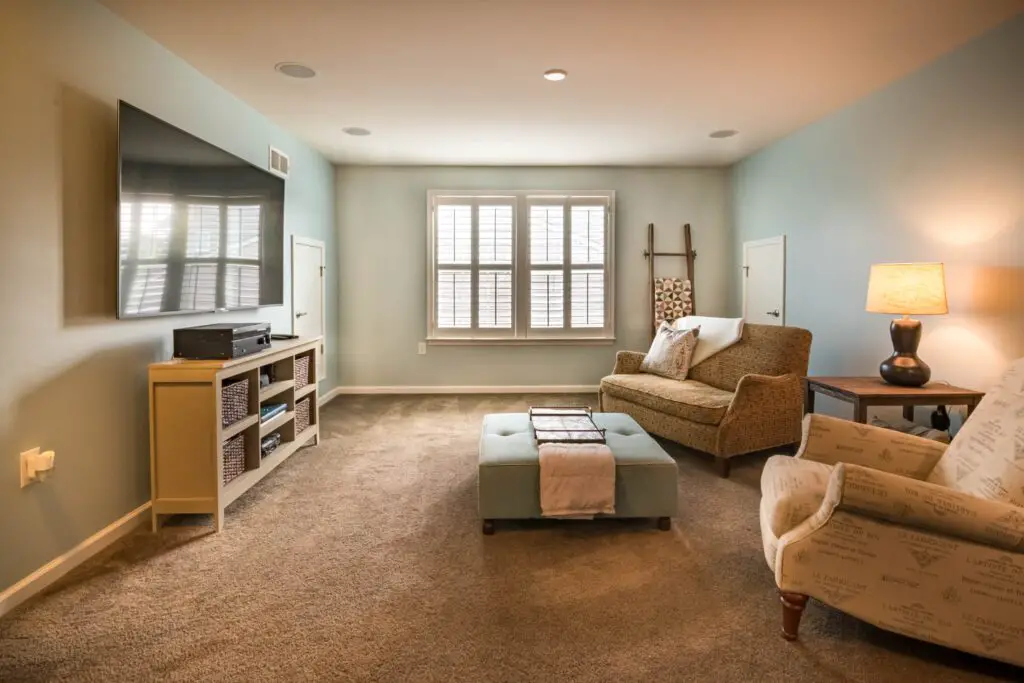Your living room is the heart of your home, a space where you unwind, entertain guests, and create lasting memories with your loved ones. The right color palette can significantly impact the ambiance and aesthetics of this essential living space. From calming neutrals to vibrant hues, each color has the power to evoke emotions and set the tone for your home.
In this comprehensive guide, we will explore the art of choosing the perfect color palette for your living room. We’ll delve into color theory and understand how different colors work together. We’ll also explore ways to create a harmonious and inviting atmosphere. Whether starting from scratch or looking to refresh your living room, these expert tips will help you make confident color choices. These reflect your style and create a space you’ll love.
I. Understanding Color Theory
Before diving into selecting the perfect color palette for your living room, it’s essential to understand the fundamentals of color theory. Colors are not just visually pleasing; they can also evoke emotions and affect moods. There are three primary colors: red, blue, and yellow. Mixing these colors produces secondary colors: green, purple, and orange. Tertiary colors are formed by mixing primary and secondary colors.
- Warm vs. Cool Colors: Warm colors like red, orange, and yellow create a cozy and inviting atmosphere, while cool colors such as blue, green, and purple promote a sense of calm and relaxation.
- Complementary, Analogous, and Monochromatic Color Schemes: Complementary colors are opposite on the color wheel and create a vibrant contrast. Analogous colors are adjacent to the wheel and provide a harmonious look. Monochromatic schemes involve using shades and tints of a single color for a sophisticated effect.
II. Assessing Your Living Room Space
To choose the perfect color palette, it’s crucial to assess your living room space thoroughly. Understanding its dimensions, lighting, and existing elements will guide your living room paint color choices.
- Taking Measurements and Noting Architectural Features: Measure the dimensions of your living room, including walls, windows, and doors. Take note of any architectural features, such as exposed brick walls or built-in bookshelves.
- Identifying Natural and Artificial Lighting Sources: Consider how natural light changes throughout the day and how artificial lighting fixtures affect color perception. Lighting can significantly influence how colors appear in your living room.
- Analyzing Existing Furniture and Decor Elements: Take stock of your current furniture and decor. Decide if you want the color palette to complement or contrast with these elements.
III. Setting the Mood and Ambiance

The color palette you choose can profoundly impact the mood and ambiance of your living room. Before settling on colors, define the atmosphere you want to create.
- Defining the Desired Atmosphere and Style: Are you aiming for a cozy and intimate feel, or do you prefer a more open and airy space? Consider your personal style preferences and the purpose of the living room.
- Considering the Living Room’s Functionality and Purpose: If your living room serves multiple functions, such as a workspace or a play area. Opt for colors that promote productivity and playfulness.
- Reflecting Personal Preferences and Lifestyle: Choose colors that resonate with your personality and lifestyle. If you love vibrant colors, incorporate them as accents to add personality to the space.
IV. Harmonizing with Existing Elements
Ensure that your chosen color palette complements existing architectural features, furniture, and decor elements in your living room.
- Working with the Living Room’s Architectural Features: Emphasize unique architectural details by choosing colors that accentuate and highlight these features.
- Incorporating the Color of Large Furniture Pieces: If you have a statement furniture piece with a specific color, use it as a starting point for your color palette.
- Complementing Existing Artwork and Decorative Elements: Choose colors that harmonize with your favorite artwork, rugs, and decorative pieces.
V. Selecting the Base Color

A base color forms the foundation of your color palette and will set the overall tone of the living room.
- Choosing Neutral Colors as a Foundation: Neutrals like beige, gray, or soft white provide a versatile and timeless base for any color palette.
- Understanding the Versatility and Adaptability of Neutrals: Neutrals can easily blend with other colors. This makes them an excellent choice if you like to change decor elements frequently.
- Factors to Consider When Selecting the Base Color: Take into account the size of your living room, the amount of natural light, and your personal color preferences when choosing the base color.
VI. Building the Color Scheme
Now that you have a base color, it’s time to build a cohesive color scheme that complements the living room’s overall design.
- Exploring Various Color Scheme Options: Experiment with complementary, analogous, and monochromatic color schemes to find the best fit for your living room.
- Using Online Tools and Color Palettes: Online color palette generators can help you visualize different combinations and explore unique possibilities.
- Creating a Mood Board: Compile your favorite color combinations, furniture pieces, and decor elements on a mood board to get a sense of how they work together.
VII. Considering Lighting and Reflection

Lighting plays a vital role in how colors appear in your living room. Take into account the lighting conditions in your space to make informed color decisions.
- How Lighting Affects Color Perception: Natural and artificial lighting can alter how colors look. Test color samples under different lighting conditions to ensure they remain consistent throughout the day.
- Testing Color Samples Under Different Lighting Conditions: Paint small sections of your living room walls with color samples and observe how they look during various times of the day.
- Avoiding Overly Bright or Dark Colors in Low-Light Areas: In rooms with limited natural light, opt for lighter colors to create a more open and airy feel.
VIII. Balancing Bold and Subtle Colors
Balancing bold and subtle colors is essential for creating a visually appealing and harmonious living room.
- Utilizing Accent Colors to Add Interest and Depth: Accent colors can be introduced through throw pillows, artwork, and decorative pieces to add pops of color.
- Ensuring a Balanced Distribution of Colors Throughout the Room: Avoid concentrating all bold colors in one area; instead, disperse them evenly throughout the space.
- Avoiding Overwhelming the Space with Too Many Bold Colors: Limit the number of bold colors to prevent the living room from feeling chaotic and cluttered.
IX. Testing with Swatches and Samples

Before committing to a color palette, test various swatches and samples in your living room to ensure the colors work well together.
- Acquiring Paint Swatches and Fabric Samples: Collect paint swatches and fabric samples from local home improvement stores to compare and contrast colors.
- Evaluating How Colors Interact in the Living Room Environment: Tape the swatches on different walls and observe how they interact with the existing furniture and decor.
- Revisiting the Mood Board and Making Necessary Adjustments: Based on your swatch tests, revisit your mood board, and make any necessary adjustments to the color scheme.
X. Considering Psychological Impact
Colors can evoke emotions and influence mood. Consider the psychological impact of colors when choosing your living room’s color palette.
- How Different Colors Influence Emotions and Mood: For example, blues and greens are calming and serene, while yellows and oranges can be energizing and cheerful.
- Selecting Colors that Promote Relaxation and Comfort: Opt for soothing colors in areas meant for relaxation, such as seating areas or reading nooks.
- Addressing the Preferences of Family Members and Household Residents: Involve other family members in the color selection process to ensure everyone feels comfortable in the living room.
XI. Seeking Professional Advice

If you’re uncertain about your color choices or need expert guidance, don’t hesitate to seek professional advice.
- Consulting with Interior Designers or Color Experts: Interior designers can offer valuable insights. They can suggest color palettes that align with your preferences and living room’s aesthetics.
- Gathering Feedback from Friends and Family: Get opinions from trusted friends and family members. Try to gain multiple perspectives on your color choices.
- Knowing When to Trust Your Instincts and Make the Final Decision: Ultimately, you are the best judge of your living room’s color palette. Trust your instincts and make decisions that resonate with you.
XII. Implementing the Chosen Color Palette
With your color palette decided, it’s time to bring your living room to life with a fresh coat of paint and carefully selected decor.
- Preparing the Living Room for Painting and Redecorating: Clear the space, protect furniture and floors, and patch any imperfections on the walls.
- Ensuring Proper Color Application Techniques: Follow painting best practices to achieve a professional and flawless finish.
- Incorporating Accent Pieces and Decor to Enhance the Chosen Palette: Introduce furniture, rugs, curtains, and decor elements. These elements should complement the chosen color palette.
XIII. Reviewing and Revising as Needed

Living with your new color palette for a trial period will allow you to fine-tune your choices for a perfect result.
- Living with the New Color Palette for a Trial Period: Observe how the colors feel and look in your living room over a few days or weeks.
- Identifying Any Adjustments or Tweaks Required: Make notes of any changes you’d like to make. Consider how they will enhance the space.
- Celebrating the Successful Transformation of Your Living Room: Congratulations! Your carefully chosen color palette has transformed your living room into a beautiful and inviting space.
Conclusion
Choosing the perfect color palette for your living room is an art that balances aesthetics, functionality, and personal preferences. By understanding color theory, considering lighting, and harmonizing with existing elements. You can create a space that reflects your style and enhances your living experience. Embrace your creativity, trust your instincts, and enjoy the process of transforming your living room into a place you’ll love to call home.
FAQs (Frequently Asked Questions)
1. Can you use multiple color palettes in your living room?
While it’s best to stick to one primary color palette for cohesion, you can introduce complementary accents or small sections of different color schemes for added interest.
2. What are some timeless neutral colors you can use as a base?
Timeless neutrals include shades of white, beige, and gray. These colors provide versatility and can serve as a backdrop for various decor styles.
3. How can you make a small living room feel more spacious with color?
Lighter, cooler colors can create a sense of spaciousness. Opt for pale blues, soft greens, or pastel hues to open up the room visually.
4. Should you follow color trends or stick with classic choices?
While it’s fun to explore color trends, classic choices often stand the test of time. Consider incorporating trendy colors as accents that can easily be updated in the future.
5. How do you ensure that the chosen colors will work well together?
Testing paint swatches and fabric samples in your living room under various lighting conditions. This will help you determine if the colors harmonize well together.



